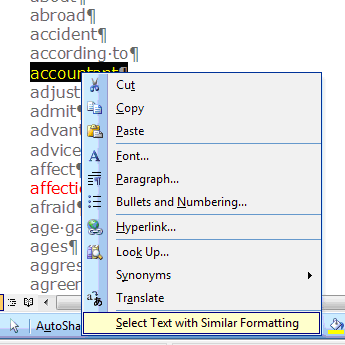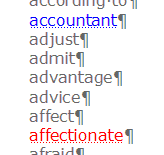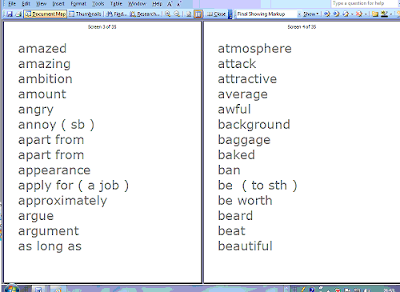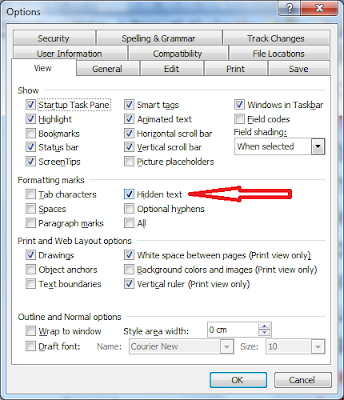Setting up an information gap and getting students to bridge the gap by speaking English.
As a regular part of almost every day of class, I set up an information gap by sending half the students out of the class with a written task to do and providing the ones in the class with some kind of input usually something that they listen to. I find the final speaking and the preparation stages helping the ‘speakers’ get from input to output are a truly communicative aspect of the course. It puts the grammar presentation and practice in their place as merely one part of the course.
On the first day(s) of class I enjoy demonstrating the basic procedure with the input coming from a video:
As I said elsewhere: “I also like to do something that I really felt worked well last year. It's something I had used a lot some years ago, but had stopped using because of lack of space. The idea is that half the class goes out of the class and does something while the other half watches a video. They rehearse retelling the story of the video to each other and then the students outside come in and hear all about the video. Ideally, this should be done vice versa with a second video, but I never seem to have time to do that on the same day so I have do it on Day 2. During the rehearsals I am circulating to help them. Error monitoring can be done during the final retelling when it is truly communicative.”
Last Thursday was going to be a pretty standard day with both my classes: both were going to do a pair of retelling tasks involving first one half and later the other half going outside and doing a ‘grammar exercise’ while the other half would be listening to a text being read aloud to them or listening to a recording from the course book.
The exercises done outside are always done by both halves of the class and now I nearly always use photocopiable worksheets from the teacher’s books of New English File (Pre-) Intermediate. The major addition I have made this year is to have ready-made answer sheets for the exercises so the students can correct the exercises themselves before coming back into the classroom. It’s quite a lot of work making the answer sheets, but I’ll probably use them again at least once.
The Pre-Intermediate students listened to me reading aloud a long text from pages 44-45 of their book. They didn’t look at the book, and some of them took notes even though I had promised I would give them an outline to speak from. The students were put in pairs. One student in each pair was rather pushed into retelling the story after this first reading, but couldn’t remember everything they had understood and obviously there were things they hadn’t understood anyway. I then read the story aloud again, this time displaying the text using two-panel reading view in Word on the IWB. The projector was blanked out and the other student retold the story, presumably much better. In both rehearsals for the real communicative task, I was on hand to help with language where needed but rarely with content.
I also slipped out from time to time to see how the students outside were getting on with their task and handing them individual answer sheets when they were ready. I had asked them to work individually as I know from experience that they spend far longer if they do it in pairs. One of the problems with this technique is keeping the two halves of the class in sync.
Finally, the students came back in and I was able to assign them ‘at random’ to a partner who would tell them about what they had listened to. At this stage I usually either monitor for errors or assess their speaking.
But this time it was very different. I recorded them re-telling the story: all of them! We only lost one person’s recording. The secret is to have enough mp3 voice recorders that can simply be plugged into the computer and the mp3 files copied directly to the Library in Edmodo. OK I had to rename them first so that they had the name of the student speaking in the file name. It worked a treat!
In one class we were one recorder short and I asked students if they could record their voice on their mobile phone and one student volunteered and successfully recorder his contribution as an .amr file, which he sent to my email account. I converted it to an mp3 file here http://www.freefileconvert.com/ and attached it to my message to him and his partner.
Then it was the same thing vice-versa. The other half of the class listened to the shorter, but much harder listening exercise on page 45 of New English File Pre-Intermediate and in fact they listened to it three times and there were three practice re-tellings. The pairs for the final retelling to the students outside were the same as before.
I was really pleased with how well they took to the idea of recording their voices and this included some new students who had only joined the class 4 classes before. I recorded myself reading the first story aloud to get them used to the idea of the recorders and everyone overcame their initial nerves very quickly.
I then promised them that I would send the files to them and them only – not to the whole class. And this morning I send two files to each pair of students with this note “I hope you enjoy listening to your recordings. Listen to yours and listen to your neighbour's again. Send a reply with your comments. These are private: only you, your neighbour and I can read your comments.”
Subsequently, I have listened to each recording and noted 4 or five words or phrases that they mispronounced, but haven’t decided yet what to do with these personalised lists.
I followed the same procedure with the Intermediate class I had half an hour later. Each half listened to me reading aloud one of the stories on page 47 of New English File Intermediate about two women who didn’t give up when they lost a limb and excelled in the sports they had excelled at before their accidents.
Two students have responded so far saying that it made them realise how much work they needed to do on their speaking. I have suggested this:
“One thing you could do, ____, is to read the text on page 47 again. Close the book and practice retelling the four stories again and again without writing anything. If you want to record your voice you can do it here http://vocaroo.com/ You can then send me a link to your recording”




